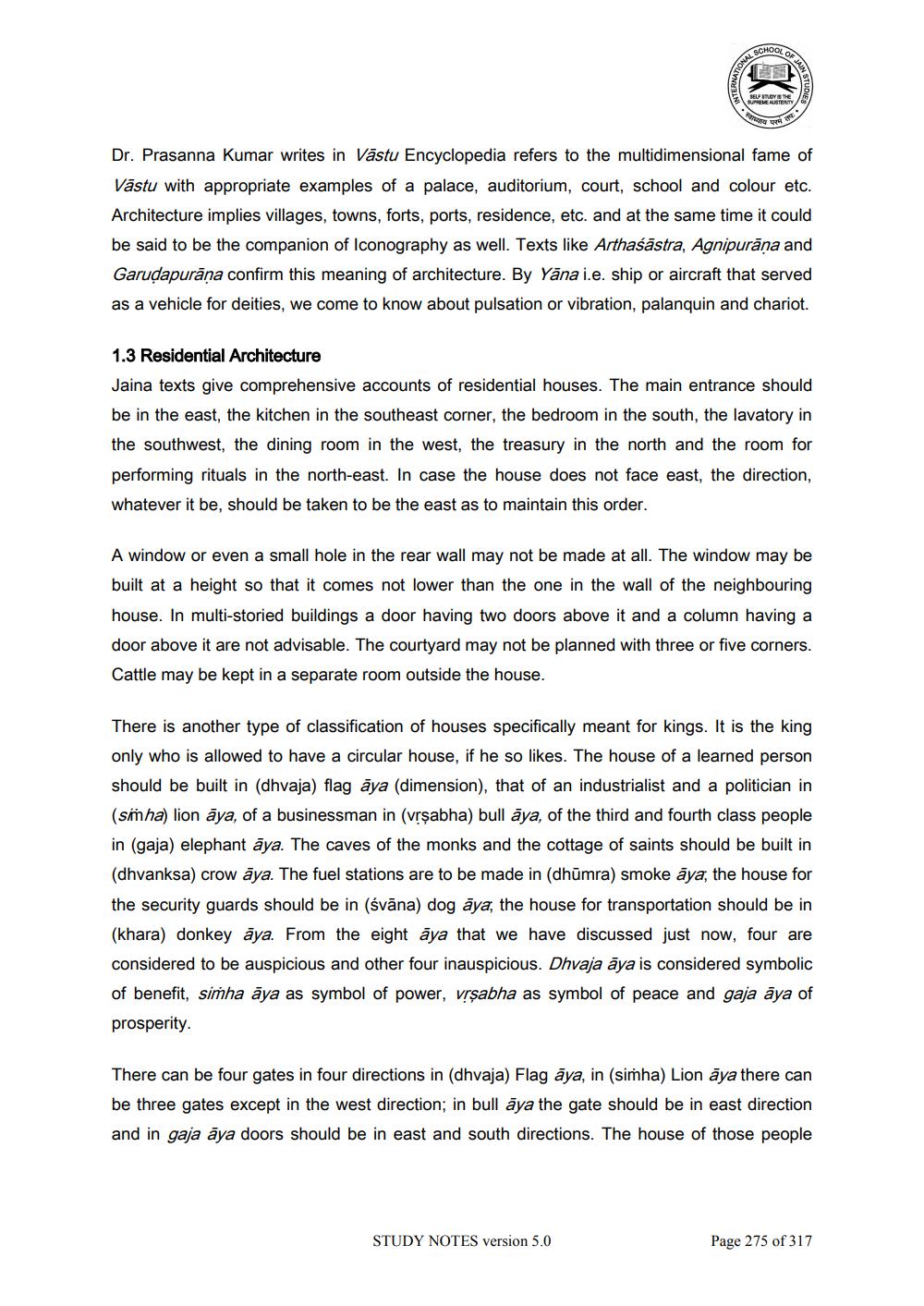________________
Dr. Prasanna Kumar writes in Vāstu Encyclopedia refers to the multidimensional fame of Vāstu with appropriate examples of a palace, auditorium, court, school and colour etc. Architecture implies villages, towns, forts, ports, residence, etc. and at the same time it could be said to be the companion of Iconography as well. Texts like Arthaśāstra, Agnipurāņa and Garudapurāņa confirm this meaning of architecture. By Yāna i.e. ship or aircraft that served as a vehicle for deities, we come to know about pulsation or vibration, palanquin and chariot
1.3 Residential Architecture Jaina texts give comprehensive accounts of residential houses. The main entrance should be in the east, the kitchen in the southeast corner, the bedroom in the south, the lavatory in the southwest, the dining room in the west, the treasury in the north and the room for performing rituals in the north-east. In case the house does not face east, the direction, whatever it be, should be taken to be the east as to maintain this order.
A window or even a small hole in the rear wall may not be made at all. The window may be built at a height so that it comes not lower than the one in the wall of the neighbouring house. In multi-storied buildings a door having two doors above it and a column having a door above it are not advisable. The courtyard may not be planned with three or five corners. Cattle may be kept in a separate room outside the house.
There is another type of classification of houses specifically meant for kings. It is the king only who is allowed to have a circular house, if he so likes. The house of a learned person should be built in (dhvaja) flag āya (dimension), that of an industrialist and a politician in (simha) lion āya, of a businessman in (vrşabha) bull aya, of the third and fourth class people in (gaja) elephant āya. The caves of the monks and the cottage of saints should be built in (dhvanksa) crow āya. The fuel stations are to be made in (dhūmra) smoke āya, the house for the security guards should be in (śvāna) dog āya, the house for transportation should be in (khara) donkey aya. From the eight āya that we have discussed just now, four are considered to be auspicious and other four inauspicious. Dhvaja āya is considered symbolic of benefit, siṁha āya as symbol of power, vrşabha as symbol of peace and gaja āya of prosperity.
There can be four gates in four directions in (dhvaja) Flag āya, in (sisha) Lion āya there can be three gates except in the west direction; in bull āya the gate should be in east direction and in gaja āya doors should be in east and south directions. The house of those people
STUDY NOTES version 5.0
Page 275 of 317




